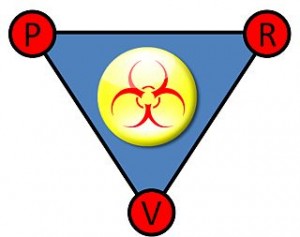 We are social animals and we need social interaction with others of our kind – it is the way our caveman wetware works.
We are social animals and we need social interaction with others of our kind – it is the way our caveman wetware works.
And we need it as much as we need air, water, food and sleep. Solitary confinement is an effective punishment – you don’t need to physically beat someone to psychologically hurt them – just actively excluding them or omitting to notice them is effective and has the advantage that it leaves no visible marks – and no trail of incriminating evidence.
This is the Dark Art of the Game Player and the act of social omission is called discounting – so once we know what to look for the signature of the Game Player is obvious – and we can choose to play along or not.
Some people have learned how to protect themselves from gamey behaviour – they have learned to maintain a healthy balance of confidence and humility. They ask for feedback, they know their strengths and their weaknesses, and they and strive to maintain and develop their capability through teaching and learning. Sticks and stones may break their bones but names can never hurt them.
Other people have not learned how to spot the signs and to avoid being sucked into games – they react to the discounting by trying harder, working harder, taking on more and more – all to gain morsels of recognition. Their strategy works but it has an unfortunate consequence – it becomes an unconscious habit and they become players of the game called “Harried”. The start is signalled by a big sigh as they are hooked into their preferred Rescuer role – always there to pick up the pieces – always offering to talke on extra work – always on the look out for an opportunity to take on more burden. “Good Ol’ Harried” they hear “S/he works every hour God sends like a Trojan”. The unspoken ulterior motive of the instigator of the game is less admirable “Delegate the job to Harried – or better still – just mess it up a bit do nothing – just wait – Harried will parachute in and save the day – and save me having to do it myself.” The conspirators in the game are adopting different roles – Victim and Persecutor – and it is in their interest to have Rescuers around who will willingly join the game. The Persecutors are not easy to see because their behaviour is passive – discounting is passive aggressive behaviour – they discount others need for a work-life balance. The Victims are easier to spot – they claim not be able to solve their own problems by acting helpless and letting Harried take over. And the whole social construct is designed with one purpose – to create a rich opportunity for social interaction – because even though they are painful, games are better than solitary anonymity.
According to Eric Berne, founder of the school of Transactional Analysis, games are learned behaviour – and they spring from an injunction that we are all taught as children: that each of us is reliant on others for recognition – and those others are our parents. Sure, recognition from influential others is important BUT it is not our only source. We can give ourselves recognition. Each of us can learn to celebrate a job well done; a lesson learned; a challenge overcome – and through that route we can learn to recognise others genuinely, openly and without expectation of a return compliment. But to learn this we have to grasp the nettle and to unlearn our habit of playing the Persecutor-Rescuer-Victim games; and to do that we must first shine a light onto our blindspots.
Gamey behaviour is a potent yet invisible barrier to improvement. So if it is endemic in an organisation that wants to improve then it needs to be diagnosed and managed as an integral part of the improvement process. It is a critical human factor and in Improvement Science the human factors and the process factors progress hand in hand.
Here is an paragraph from Games Nurses Play by Pamela Levin:
“Harried” is a game played when situations are complicated. The aim is to make the situation even more complicated so that a person feels justified in giving up. “Harried Midwife” is so named because I (P.L.) first observed the game on an obstetric floor, but it has its counterpart in other clinical settings. The game is aided by institutional needs, since it is a rare hospital unit that has the staff adequate in numbers these days. In the situation I observed, the harried nurse sent her only nurse’s aide to lunch when three deliveries were pending. Instead of using a methodical approach, she went running about checking a pulse here, a chart there, a dilatation here, and an I.V. there, so she never was caught up with the work. She lost her pen and couldn’t “chart” until she found it. She answered the telephone and lost the message. She was so busy setting up the delivery room, she forgot to notify the doctor of the impending delivery. The baby, which arrived in the labor room, was considered contaminated, and could not be discharged to the newborn nursery. After the chaos had died down, the nurse felt justified in doing almost no work for the rest of the day.
Click for the complete Games Nurses Play article here

